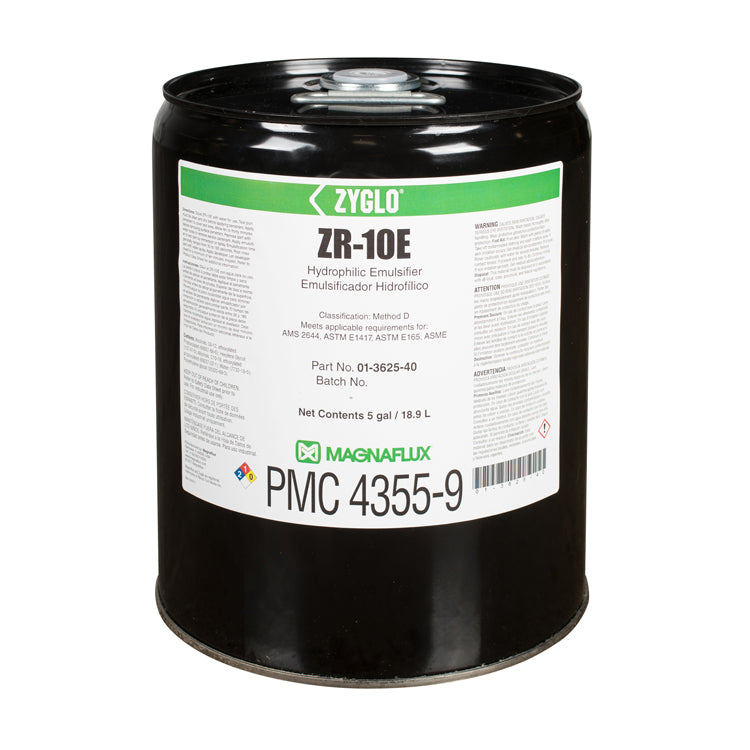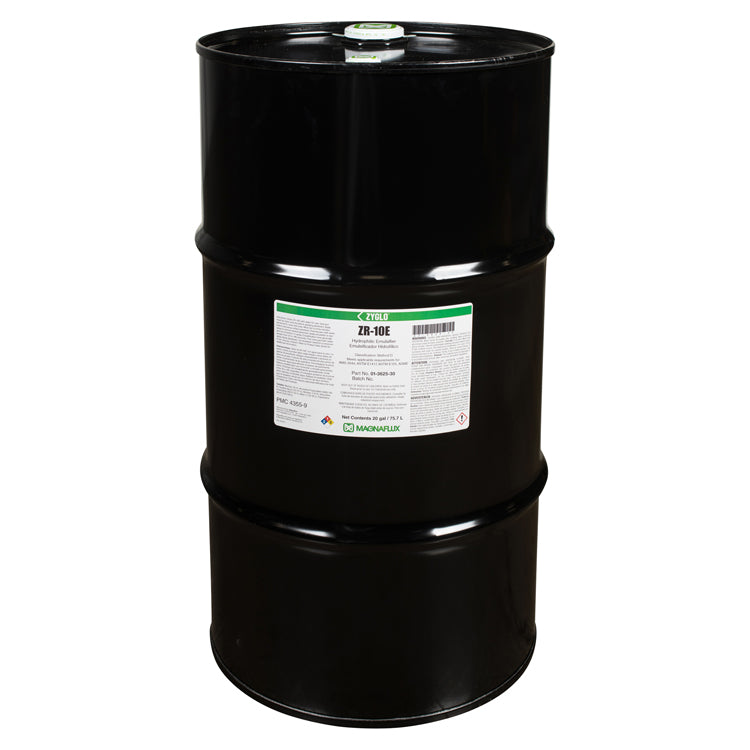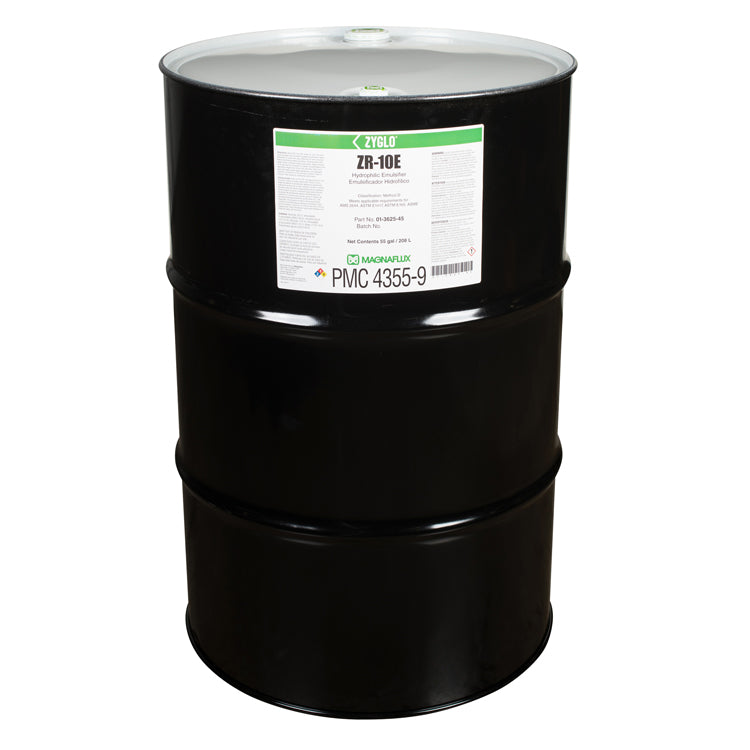


Hydrophilic Emulsifier
Introducing a premium hydrophilic emulsifier designed to enhance your penetrant testing processes. This versatile emulsifier effectively reduces fluorescent background from penetrants on rough surfaces, while also minimizing bleed-out from hollow parts. With its ability to yield reliable and reproducible test results, it is an essential tool for achieving accuracy in post-emulsifier penetrant applications.
This emulsifier is proudly listed on the QPL SAE AMS 2644 Qualified Product List and is approved for use by industry leaders, ensuring compliance with stringent quality standards.
Benefits
Maximize penetrant inspection process control
- PE penetrant system is less susceptible to human error since ZR-10E only works with rinse water to remove excess surface penetrant
- Tested and confirmed per AMS 2644 to work with Magnaflux PE penetrants for verified penetrant system reliability
- Maintains solution consistency for dependable performance with minimal agitation
Wide range of inspections
- Flexible to work with many types of equipment and application methods
- Inspect a wide range of high-value components without fear of corrosion or specification non-conformance
- Meets all major industry and NDT specification requirements, including Aerospace Prime and OEM specs, AMS 2644 and ISO 3452
Maximize operator comfort and safety
- Promotes better inspection quality by providing the operator with a more comfortable work environment
- Reduces discomfort from strong odors
- Exceeds all EHS requirements
Classifications & Temperature
NDT Method: Penetrant Testing
Type: Type 1 and Type 2
Method: Method D

